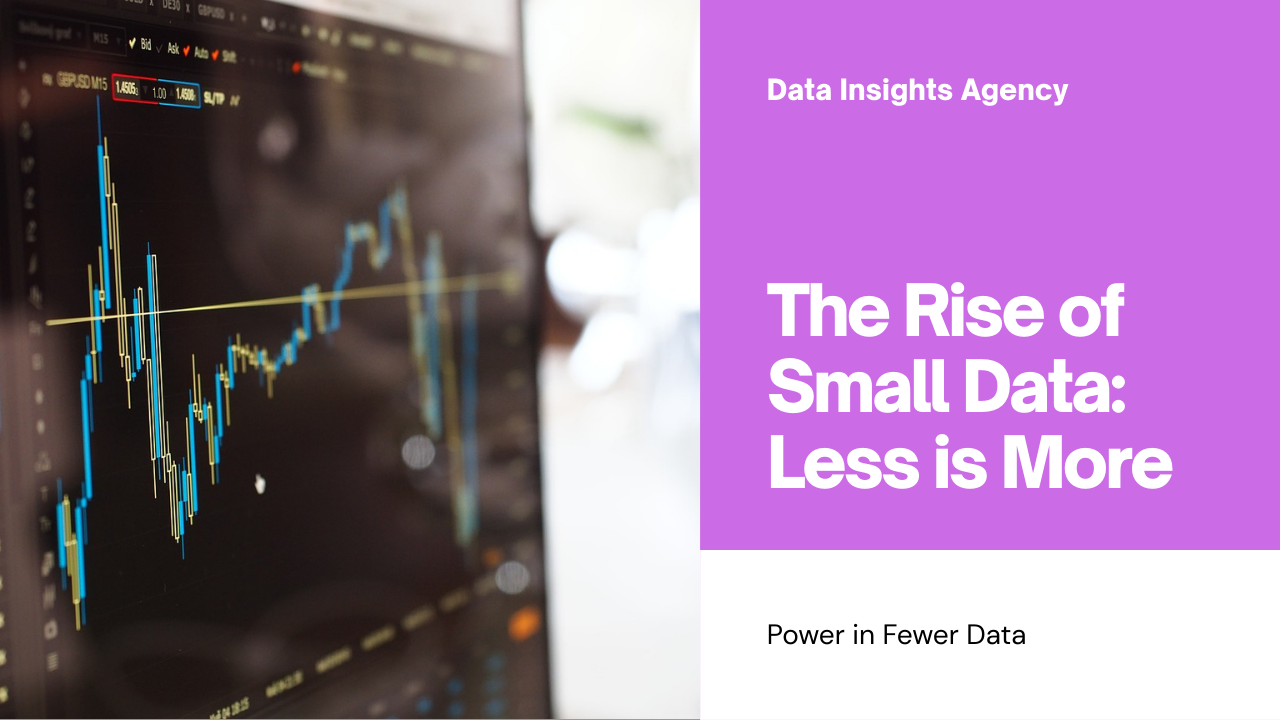Big data has been the driving force behind most artificial intelligence (AI) breakthroughs for the past decade. From social media algorithms to predictive healthcare tools, it’s been all about collecting massive amounts of information to train smarter models.
But in 2025, a surprising shift is taking place: the rise of small data in AI.
Rather than gathering billions of data points, researchers and businesses are now looking at how to extract maximum value from minimal, high-quality datasets. It’s a trend fueled by data privacy concerns, rising storage costs, and the need for faster decision-making.
Here’s why small data is gaining momentum—and how it could change how we build and use AI.
What Is Small Data in AI?
Small data refers to datasets that are limited in volume but rich in context. Unlike big data, which requires complex infrastructure and high computing power, small data can often be processed on a laptop or edge device.
Examples include:
-
Patient records in a local clinic
-
Real-time sensor data in smart homes
-
Customer behaviour in a niche e-commerce store
With the right algorithms, small data can yield just as much insight as large-scale datasets—sometimes even more.
Top 7 Data Science and AI Trends in 2025 You Can’t Afford to Ignore
Why Small Data Matters in 2025
1. Improved Privacy and Compliance
Laws like GDPR and CCPA have made it increasingly difficult (and risky) to collect user data at scale. Small data strategies focus on local analysis, data minimization, and on-device learning, reducing reliance on cloud storage or third-party tracking.
This privacy-centric approach isn’t just ethical—it’s also strategic.
“Small data aligns perfectly with the growing demand for privacy-first AI.”
— MIT Technology Review, 2024
2. Faster Time-to-Insight
Big data often requires days—or weeks—of cleaning, labeling, and processing. Small data models, however, can be trained quickly, allowing businesses to respond to changes in real-time.
In fields like manufacturing or logistics, this speed translates into cost savings, improved safety, and faster innovation.
3. Energy-Efficient AI
Training large AI models can consume as much energy as multiple households use in a year. With global attention shifting to sustainability, smaller datasets and leaner models are gaining traction as eco-friendly alternatives.
Startups and researchers are turning to techniques like:
-
Few-shot learning
-
Transfer learning
-
Federated learning
All of which thrive in small-data environments.
Use Cases: Where Small Data Shines
Healthcare
A rural hospital may only have 1,000 patient records—but that data is rich in context. With expert-labeled samples, small data models can help predict disease outbreaks or optimize treatment protocols without breaching privacy.
Agriculture
Precision farming relies on local weather, soil, and crop data. Small data solutions can guide irrigation, fertilization, and harvesting decisions using a farmer’s own records—no mega servers needed.
Finance
Niche investment firms use small, curated financial data sets to detect market patterns faster than larger institutions relying on generic, aggregated data.
The Role of Synthetic Data
To make small data even more powerful, many developers are turning to synthetic data—artificially generated datasets that replicate real-world scenarios without exposing private information.
Tools like Unity AI, Gretel.ai, and IBM’s Synthetic Data Generator are making it easier to simulate high-quality data for training models when real-world data is scarce.
Challenges and Limitations
Despite its promise, small data isn’t perfect. Challenges include:
-
Higher risk of bias if the data isn’t well-balanced
-
Limited generalization to larger populations
-
Greater reliance on domain expertise
That’s why small data often works best when paired with human insight and interpretability.
Final Thoughts: Small Data, Big Impact
As the AI landscape evolves, it’s clear that more data isn’t always better. Small data in AI represents a smarter, leaner, and more ethical way forward—one that empowers businesses to do more with less.
At GetMorc, we believe in AI that works for everyone. Whether you’re building a custom AI solution or exploring how to optimize with lean data, our team can help turn insight into action.






